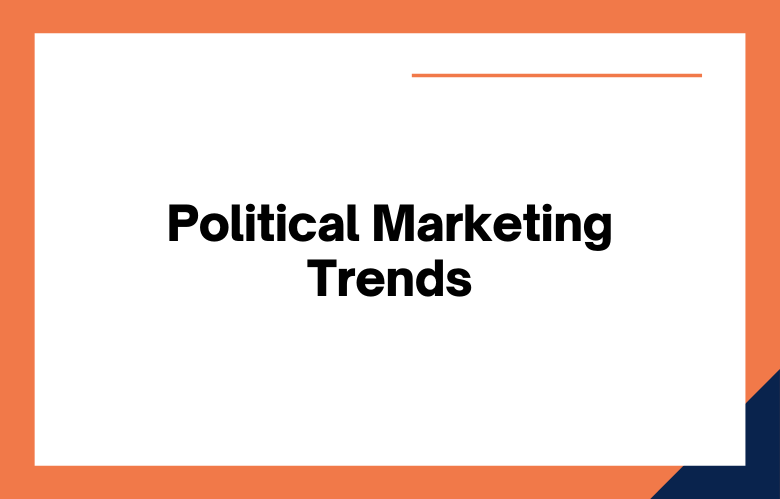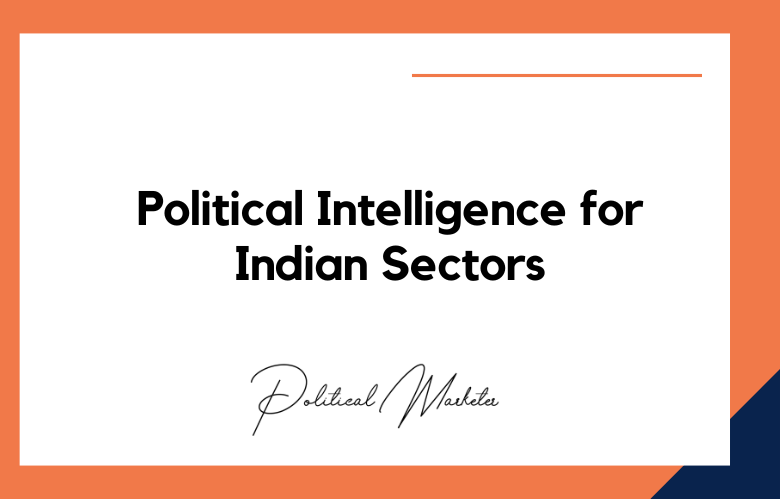In the year 2022, what will the state of political marketing be? Political marketing is a complicated and nuanced industry. The landscape constantly changes, with new technologies emerging every day. To make effective decisions about political marketing in the future, we need to understand where it came from in the present.
Here are some of my predictions for Political Marketing Trends 2024
- Political marketers should focus on consumer engagement rather than messages aimed at persuading voters as much as possible
- There needs to be more transparency between politicians and their constituents because people want information that they can trust
- Political marketers should be open to experimentation and new approaches because many current trends are simply ads
- Political marketing will improve if politicians can find a way to engage with voters in each community. For example, they may need to make more appearances at public events or speed up their responses on social media channels like Twitter. Politicians in the year 2022 should take the time to understand their constituents and address concerns
- Political marketing will be more heavily scrutinized in the future because people are becoming more aware of how politicians influence them. We are not biased toward one party or another but instead work for a better democracy.
As technology changes our lives, Political Marketing Trends 2022 will change to keep up. Politicians need to be aware of the trends and changes that are coming to prepare themselves for the future of Political Marketing.
In this article, I discussed some predictions about Political Marketing Trends in 2024 from my perspective as a marketing professional specializing in political campaigns.
Political Marketing Trends 2024
- With the 2020 election, candidates will ramp up their marketing efforts.
- People will have many questions about what is happening in America and how it affects them.
- The population’s trust in politicians has steadily declined since the 2016 election.
- Campaigns will focus on telling personal stories and highlighting individual accomplishments.
- The 2020 Presidential election will be a turning point in how politicians use technology to communicate with voters.
- Political marketing is not just about television, radio, and print media; it’s also about digital platforms like Facebook and Twitter.
- Social networks are now the most popular way for people to get their news
- Candidates will be expected to create content that appeals to different types of audiences on social media, including those who don’t follow politics closely
- An increase in voter turnout from millennials and Generation Z voters
- More women are running for office and winning elections
- The 2020 election will be the first to use facial recognition technology
- Political candidates will have to pay attention to how they are perceived on social media
- Candidates with diverse backgrounds and more inclusive policies will dominate in 2022
- Campaigns will focus on political issues that affect people’s everyday lives, such as education and healthcare
- Political marketing will be used to target specific demographics
- More people will vote online and on their phone
- Digital advertising budgets will increase by 2020, with more money going toward social media ads.
- Because of the high cost, campaigns will spend less time on traditional media like TV and radio.
- The majority of marketing campaigns will be online
- There will be a rise in the number of businesses that use video for their marketing campaign, including live-streaming and podcasts
- Marketing teams will have to work harder to make sure they stay on top of trends because there are more sources than ever before
- More companies will start using influencer marketing
- Political marketing will be more personal, with a focus on individualized data
- Marketing messages will become more diverse, catering to different demographics and groups
- Political marketing will be less about the party and more about the candidate
- Candidates will use social media as an organizing tool rather than just for campaigning
- Marketing is becoming more of a science, with the use of AI to predict customer behavior
- The rise in social media has created more competition for advertising dollars
- Companies are turning to influencers and celebrities to promote their products and services
- The 2020 election will be the first in which a candidate is elected without being white
- Political marketing has evolved to include more personalization and interactive content
- Marketing strategies have shifted from traditional advertising to word-of-mouth, social media, and influencer marketing
- The 2020 election will be a turning point for marketing in politics
- Social media will continue to grow as a powerful tool for politicians, with Facebook and Twitter leading the way
- Marketing campaigns will shift from traditional advertising to grassroots organizing, with more focus on targeting specific demographics rather than broad audiences
- Political parties are expected to invest heavily in data analytics, using this information to tailor their messages and priorities
- Political marketing will continue to grow as a part of the marketing industry
- Candidates will be able to use social media and other outlets to reach out to voters
- Campaigns will have more international outreach with an emphasis on targeting specific demographics in different countries
- Advertising won’t be limited to traditional channels like TV, radio, or print; it’ll also include digital advertising methods such as Facebook ads or Google Adwords
- Tech-savvy millennials will make up the majority of voters in 2022, and they will be more likely to use social media for political information
- Political advertising on television is expected to decrease by 25% as people turn to YouTube and other video platforms instead
- There’s a projected increase in interest group spending from $1 billion in 2020 to an estimated $4 billion by 2024
- The Democratic Party is expected to focus its efforts on winning back seats in state legislatures across the country
- Increasingly, candidates will be using social media as a critical part of their campaign
- Candidates will also focus on how they can use the internet to inspire and create change in people’s lives
- Marketing campaigns for political parties will focus more on the candidate’s personal story and vision rather than attacking opponents or concentrating solely on policies.
- The 2020 election will be the first in an era of total information awareness.
- Issues like climate change and gun control will become more present than ever before
- Political marketing must evolve with changing technologies, including augmented and virtual reality.
- Political marketing is becoming increasingly sophisticated as it becomes more and more challenging to build a brand in the digital age.
- The 2020 election will see an increase in influencers with large followings on social media, such as YouTube stars, Instagram models, and Snapchat celebrities.
- Political parties are beginning to invest in their social media accounts to combat fake news often spread by these influencers.
- As technology advances, political marketers are figuring out new ways to reach voters through virtual reality campaigns.
-The 2020s will be a time of change as the population becomes more diverse and people are looking for trending ways to engage with politics
-Political parties will have to adapt and change their strategies to stay relevant
-Technology transforms how political campaigns reach voters through social media, phone apps, or chatbots. These changes will require candidates to invest more heavily in digital advertising than ever before
-Campaigns must also contend with fake news on social media and other platforms that can spread misinformation at an alarming rate - The increasing importance of social media in political campaigns
- Increasing polarization between parties and ideologies
- The 2020 election will be the first in which people born after 2000 are eligible to vote
- As a result, there is an increased focus on social media and other digital marketing channels
- Political parties have also started using data analytics to identify potential voters and get them engaged with their campaign
- This has led to more targeted advertising campaigns that use different messaging for each voter segment
- The 2020 presidential election will be a pivotal moment for political marketing
- Political marketing will become more sophisticated, with the use of artificial intelligence and big data to target potential voters
- With the rise of social media, it’s essential to have an active presence on multiple platforms
- Political campaigns will shift from traditional advertising, such as TV ads, to digital advertising, like Facebook and Instagram
- This year, the United States will see a change in leadership with President Trump stepping down and Vice President Pence taking office
- 2020 is also an election year, which means that progressive candidates are already campaigning for president
- As of now, there are no significant changes to be expected on the federal level, but many states have been passing legislation to make voting easier for their residents
- There’s been a lot of talk about whether or not we’ll see another wave of women running for office this time around
- Social media is a powerful tool for political marketing
- The use of influencers in campaigns will become more popular, as well as the incorporation of celebrities and other famous people into campaign ads
- There will be an increase in the number of international election campaigns that involve social media and digital advertising, with politicians using these tools to reach voters abroad
- It is expected that there will be a decrease in traditional campaign strategies due to the increased accessibility and popularity of digital platforms such as Twitter and Facebook
- The 2020 election will be the most expensive in history
- Political marketing is becoming more and more sophisticated with each passing year
- Digital media has become an integral part of political campaigns, primarily through social media platforms like Facebook or Twitter
- Marketing messages on these sites are tailored to individual preferences based on information they have provided
- Political marketing will be more personal
- Marketing campaigns will focus on the emotional aspects of politics rather than the political facts.
- Campaigns will focus on how they can help people, not just what their party stands for
- Marketing strategies will use social media to target specific demographics with tailored messages and images, such as Facebook ads or Twitter targeting.
- Political marketing will be more targeted and personal, using social media, data mining, and artificial intelligence.
- Due to increased campaign costs, candidates must spend much more time fundraising.
- Campaigns will focus on quality over quantity by creating fewer ads that are highly polished and well-researched
- Marketing teams for political candidates will need diverse skills to execute all aspects of their campaigns efficiently.
- In 2022, political marketing will be more transparent
- Campaigns will be using digital platforms to engage voters and volunteers
- Political parties will have a more substantial presence on social media as they try to reach younger voters
- Marketing strategies may include targeting specific demographics with tailored messages
Conclusion
The future of marketing is a complex and nuanced topic. It constantly changes based on the latest trends in digital media, politics, business practices, etc.
With that said, it’s hard to predict what will happen next with such certainty; however, we do know for sure that marketers must be ready for anything because one never knows when or where an opportunity may arise if you are looking to hire a team of experts can help your company stay ahead of our changing world by visiting informed about political developments around the globe as well as being able to craft effective strategies and campaigns tailored to those specific needs then consider hiring us today! We pride ourselves on working closely with clients from all backgrounds and ensuring they can access quality intelligence.
The future of political marketing is a topic that has been discussed and debated for many years. With the 2020 elections approaching, now is an excellent time to look at where this industry might be headed in 2024.
Political Marketing Trends 2024 examines how marketers use digital channels to target more niche audiences than ever while also looking into what new technology will affect our nation’s democratic process. We hope you found it helpful! Please get in touch with us today if you want help with your next campaign or consulting services. One way to get in touch is by filling out our online form on this site or calling us at +919848321284. Let’s work together today!
Call: +91 9848321284
Email: [email protected]











